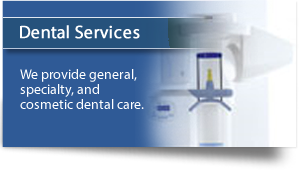Alveoplasty
When one or more permanent teeth are lost due to extraction, injury or accident, each absent tooth leaves a hole in the jawbone. Although the gums will heal over the hole, the underlying jaw bone will inevitably have high and low points causing restorations such as dentures to rub against high points, create sore spots, and fit poorly. Furthermore, over time, the edentulous (toothless) area of the jaw will also lose a significant amount of bone, causing thinning of the top ridge and again making proper denture fit a challenge. Finally, some people simply have a little extra bone jutting out from the main jawbone, preventing correct denture fitting as well.
In such situations, we use alveoplasty to smooth out uneven areas, flatten and taper overly thin ridges, and prepare the jaw to receive dentures successfully. Not only does alveoplasty ensure a better fit for dentures, but it helps control bleeding and improves healing time following multiple extractions, since we actually suture the tooth sockets closed, rather than leaving them open to fill with a blood clot as with general single tooth extractions.
We often perform alveoplasty during the same appointment with single or multiple extractions. In such cases, we’ll do the extractions first. Then, to begin the alveoplasty procedure, your dentist will simply make a careful incision in the gum tissue, peel it back to expose the bone, remove excess bony areas with clippers and a rotary drill, then smooth the section with a file. After smoothing the bone, your dentist will remove bone particles via irrigation, then suture the entire incision closed. Typically, we’ll use a locking-suture technique to minimize bleeding and seal the tissue efficiently.
After your alveoplasty, you’ll probably find that the surgery area is sore, swollen, and possibly a little bruised. The soreness will only last about a week, and is controllable via prescription pain medication for one or two days, followed by several days of over-the-counter analgesics such as acetaminophen (Tylenol) or ibuprofen (Advil, Motrin and others). Most of the swelling will peak at 24 hours, then taper off; applying an ice pack to your face over the area will minimize this. Bleeding will also taper off after the first 24 hours.
To encourage rapid recovery, we’ll often prescribe antibiotics and/or an antibacterial rinse to prevent infection of the area, particularly if you are elderly or have had many teeth removed. You also can rinse with a saline solution. To minimize bleeding and protect the suture hold, we recommend a soft diet, lots of clear liquids, and avoiding the use of a straw since suction can cause bleeding.
Occasionally, the lip and chin nerves may be slightly traumatized when alveoplasty is performed on the lower jaw. In such cases, you’ll notice numbness even after the anesthetic has worn off. Because nerves heal slowly, this condition may persist for three to six months, although it will not cause any drooping or be perceptible to outsiders. Seven to 10 days after your surgery, your surgeon will evaluate your healing progress.

